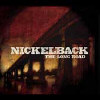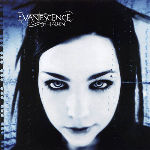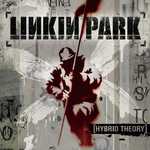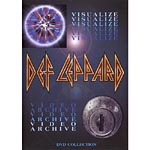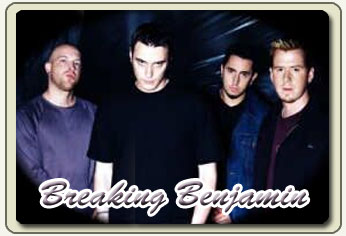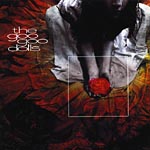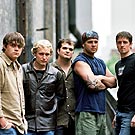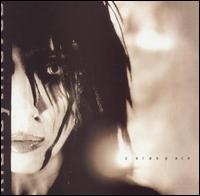|
MY MUSIC 2006
Nickelback:
|
|
|
Nickelback: Long Road (Limited Edition) (Digipak) - CD

|
Canada's Nickelback started life as a cover band in Hanna, 215 kilometres northeast of Calgary. Eventually, they tired of playing other people's songs and singer/guitarist Chad Kroeger put together a bunch of original songs, borrowed 4,000 bucks off his stepfather, and went to big city Vancouver to record them in a friend's studio. Based on the results, Kroeger's guitarist brother, Mike, and pal bassist Ryan Vikedal all relocated to Vancouver in 1996; that same year, they recorded and released the EP Hesher and full-length Curb independently and embarked on a series of cross-country tours. The group's singer had spent two years selling advertising for a soccer magazine and now applied some of the skills he had learned to his band. He asked his friends to fax and phone radio stations to request their first single until it was played often enough for Nickelback to pick up fans on their own.
In late 1998, the band decided their managers were unable to bring them to the next level and started managing themselves. Mike Kroeger handled all the distribution, brother Chad handled all the radio tracking, and Ryan Vikedal handled all the bookings. The group had also invested $30,000 into a new album. The State was released independently in January 2000 during a slow rock period when Canadian content requirements were increased and local rock radio began desperately seeking out homegrown product. What they found was Nickelback's single "Leader of Men." Nickelback toured ceaselessly for The State and 200 shows later, the band had gone from virtual unknowns to playing in front of over a million people alongside the likes of Creed, 3 Doors Down, Fuel, and more. The band's post-grunge commercial appeal wasn't lost on the record industry and The State was snapped up by Roadrunner/Island, Def Jam in the U.S., and EMI in Canada. It eventually sold an impressive 500,000 copies.
Many of the songs that comprised the next album, Silver Side Up, were written even before The State was released in America and road-tested in front of eager audiences on cross-country treks. The other significant change about this set of songs was Chad Kroeger's conscious decision to write his lyrics in a more direct manner rather than the metaphoric and vague lyrics of previous releases. "Too Bad" was about the father who was never around when Chad and his brother were growing up. "Never Again" is a song inspired by broken homes. "How You Remind Me," the first single from the album, was written at rehearsals shortly before the band went into the studio.
To record the album, the band decided to work with producer Rick Parashar (Pearl Jam, Temple of the Dog) at the same studio as The State, Vancouver's Green House. The album was completed in five short weeks and the 13 tracks were mixed by Randy Staub (Metallica, U2). The combination of Parashar and Staub, Nickelback's growing popularity, and the quality of the songs sent Silver Side Up into the sales charts around the world, spearheaded by the hit single "How You Remind Me." It was only the second time in history since the Guess Who's "American Woman" that a Canadian band had been number one on both the Canadian and U.S. rock charts at the same time. After their initial mainstream exposure, Kroeger produced Vancouver natives Default and colaborated with Saliva singer Josey Scott for the Spiderman soundtrack. In the summer of 2002, the band re-released Curb since it had fallen out of print years before. ~ Ed Nimmervoll, All Music Guide |
|
Evanescence

|
|
The goth-inspired Arkansas rock band Evanescence, with its Linkin Park-meets-Tori Amos sound backed by chugging guitars, easily made it to the top of the charts in 2003 with its Wind-Up Entertainment debut album, Fallen. Amy Lee and guitarist/songwriter Ben Moody formed the band at the end of the '90s after meeting in their early teens during a "youth camp," Moody said in a statement. "I heard Amy playing Meat Loaf's 'I'd Do Anything for Love' at the piano. So I went over to meet her, and she started singing for me. I was pretty much blown away, so I suckered her into joining a band with me." As a duo, Evanescence didn't perform live, instead opting to release EPs and the full-length Origin. Lee told the BBC that Evanescence was mastering demos in Memphis, TN, when she and the band were discovered by producer Pete Matthews. He shopped the songs to record companies in New York, and Evanescence eventually landed a contract with Wind-Up Entertainment, the home of Creed. The soundtrack to the 2003 Ben Affleck action movie Daredevil brought success to Evanescence. The begging "Bring Me to Life," which appeared on the soundtrack along with the ballad "My Immortal," became a hit. Paul McCoy, of labelmates 12 Stones, raps on "Bring Me to Life," which originated as a piano ballad. It proved to be a head start to Evanescence's future hit album Fallen, produced by Dave Fortman (Boy Sets Fire, Superjoint Ritual) and released in March 2003. Evanescence ran head first into controversy promoting Fallen. Originally, it was released in the Christian and secular markets; however, the band's use of profanity during an interview with Rolling Stone prompted its label, Wind-Up Records, to recall Fallen from Christian stores. Ironically, 12 Stones is also labeled Christian. Fallen surpassed double platinum, making the Top Ten in the United States, including the Top Contemporary Christian Albums chart, the Top Five in Canada, and number one in the United Kingdom. Live, the duo fills out its lineup with John LeCompt on guitar and Rocky Gray on drums. ~ Christina Fuoco, All Music Guide |
|
|
|
|
Linkin Park

|
Old-school hip-hop, traditional classic rock, and spooling electronic vibes were the initial factors behind the building of the alternative metal quintet, Linkin Park. The band's southern Californian musical roots were also an underlying basis, for drummer Rob Bourdon, guitarist Brad Delson, and MC/vocalist Mike Shinoda formed a tight friendship while still in high school. Shortly after graduation, art student and DJ Joseph Hahn hooked up with bassist Dave "Phoenix" Farrell and Shinoda for the band, Xero. Hybrid Theory came later, but the band opted on the name Linkin Park when singer Chester Bennington was the last piece added to the band in 1999. Soon the band became a noticeable face at the Whisky as well as favorites in and around Los Angeles. Zomba Music's Jeff Blue was one of the few who didn't turn the band down for a contract at the turn of the millennium - Linkin Park signed to Warner Bros. after being turned down three times in late 1999 and got to work on their debut album. Taking a piece from their past, they named the album Hybrid Theory. It was released in fall 2000 and it showcased their likes for fellow alternative acts such as the Deftones, the Roots, Aphex Twin, and Nine Inch Nails. The Dust Brothers also collaborated on the record, as well as producer Don Gilmore (Pearl Jam, Eve 6, Tracy Bonham). Singles such as "Crawling" and "One Step Closer" were massive radio hits and video favorites among the TRL crowd on MTV. Joint tours with Family Values and the Project: Revolution Tour with Cypress Hill led the band to play 324 shows in 2001. Linkin Park was in demand. Come January 2002, Hybrid Theory received three Grammy nominations for "Best Rock Album" and "Best New Artist." A month later, Linkin Park walked away with an award for "Best Hard Rock Performance" for "Crawling." They spent the remainder of the year hold up in the studio, again working with Gillmore, recording a follow-up to their eight times platinum debut Hybrid Theory.
Linkin Park's sophomore effort Meteora was released in March 2003; the first single "Somewhere I Belong" was an instant hit. The second annual Projekt Revolution tour got underway in spring 2003 with Linkin Park joining Mudvayne, Xzibit and Blindside; Summer Sanitarium dates with Metallica, Limp Bizkit, Mudvayne and the Deftones followed in July and August. ~MacKenzie Wilson, All Music Guide |
|
DEF LAPPARD .....

|
Def Leppard, in many ways, was the definitive hard rock band of the '80s. There were many bands that rocked harder, and were more dangerous, than the Sheffield quintet, but few others captured the spirit of the times quite as well. Emerging in the late '70s as part of the New Wave of British Heavy Metal, the group actually owed more to the glam-rock and metal of the early '70s -- their sound was equal parts T. Rex, Mott the Hoople, Queen and Led Zeppelin. By toning down their heavy riffs and emphasizing melody, Def Leppard were poised for crossover success by 1983's Pyromania, but skillfully used the fledgling MTV network to their advantage. The group was already blessed with photogenic good looks, but they also crafted a series of innovative, exciting videos, which made them into stars. They intended to follow Pyromania quickly, but were derailed when their drummer lost an arm in a car accident, the first of many problems that plagued the group's career. Def Leppard managed to pull through such tragedies and they even expanded their large audience with 1987's blockbuster Hysteria. As the '90s began, mainstream hard rock shifted away from Leppard's signature pop-metal and towards edgier, louder bands, yet the group maintained a sizable audience into the late '90s and were one of only a handful of '80s metal groups to survive the decade more or less intact.
Def Leppard had its origins in a Sheffield-based group Rick Savage (bass) and Pete Willis (guitar) formed in their late teens in 1977. A few months later, vocalist Joe Elliott, a fanatic follower of Mott the Hoople and T. Rex, joined the band, bringing the name Deaf Leopard. After a spelling change, the trio, augmented by a now-forgotten drummer, began playing local Sheffield pubs, and within a year they had added guitarist Steve Clark, as well as a new drummer. Later in 1978, the recorded their debut EP Getcha Rocks Off and released it on their own label, Bludgeon Riffola. The EP became a word-of-mouth success, earning airplay on the BBC. The group members were still in their teens.
Following the release of Getcha Rocks Off, Rick Allen was added as the band's permanent drummer, and Def Leppard quickly became the subject of the British music weeklies. Soon, they signed with AC/DC's manager Petter Mensch, who helped them secure a contract with Mercury. On Through the Night, the band's full-length debut, was released in 1980 and instantly became a hit in the U.K., also earning significant airplay in the U.S., where it reached number 51 on the charts. Over the course of the year, Def Leppard relentlessly toured Britain and America, including opening slots for Ozzy Osbourne, Sammy Hagar and Judas Priest. High N' Dry followed in 1981, and it became the group's first platinum album in the U.S., thanks to MTV's strong rotation of "Bringin' on the Heartbreak." MTV would be vital to the band's success in the '80s.
As the band recorded the follow-up to High N' Dry with producer Mutt Lange, Pete Willis was fired from the band for alcoholism, and Phil Collen, a former guitarist for Girl, was hired to replace him. The resulting album, 1983's Pyromania, became an unexpected blockbuster, due not only to Def Leppard's skillful, melodic metal, but also to MTV's relentless airing of "Photograph" and "Rock of Ages." Pyromania went on to sell 10 million copies, establishing Def Leppard as one of the most popular bands in the world. Despite their success, the band was about to enter a trying time for their career. Following an extensive international tour, the group re-entered the studio to record the follow-up, but producer Lange was unavailable, so they began sessions with Jim Steinman, the man responsible for Meat Loaf's Bat Out of Hell. The pairing turned out to be ill-advised, so the group turned to its former engineer, Nigel Green. One month into recording, Rick Allen lost his left arm in a New Year's Eve car accident. The arm was reattached, but it had to be amputated once an infection set in.
Without a drummer, Def Leppard's future looked cloudy, but by the spring of 1985 -- just a few months after his accident -- Allen began learning to play a custom-made electronic kit assembled for him by Simmons. Soon, the band resumed recording, and within a few months Lange was back on board, but once he joined the team, he judged the existing tapes inferior and had the band begin work all over again. The recording continued throughout 1986, and that summer, the group returned to the stage for the European Monsters of Rock tour. Def Leppard finally completed its fourth album, now titled Hysteria, early in 1987, releasing it that spring to lukewarm reviews; many critics felt that the album compromised Leppard's metal roots for sweet pop flourishes. The record was slow out of the starting gates -- "Women," the first single, failed to really take hold. But with the second single, "Animal," Hysteria began to take off. It became the group's first Top 40 hit in the U.K., but more importantly, it began a string of six straight Top 20 hits in the U.S., which also included "Hysteria," "Pour Some Sugar On Me," "Love Bites," "Armageddon It" and "Rocket," the latter of which arrived in 1989, a full two years after the release of Hysteria. During those two years, Def Leppard was unavoidable -- they were the kings of high school metal, ruling the pop charts and MTV, and teenagers and bands alike replicated their teased hair and ripped jeans, even when the grimy hard rock of Guns N' Roses took hold in 1988.
Hysteria proved to be the peak of Leppard's popularity, yet their follow-up remained eagerly awaited in the early '90s as the band set to work on the record. During the recording, Steve Clark died from an overdose of alcohol and drugs. Clark had long had a problem with alcohol, and following the Hysteria heyday, the band forced him to take a sabbatical; he did enter rehab, but to no apparent effect. In fact, his abuse was so crippling that Collen had to play the majority of the guitar leads on Hysteria. Following Clark's death, Def Leppard resolved to finish its forthcoming album as a quartet, releasing Adrenalize in the spring of 1992. Adrenalize was greeted with mixed reviews, and even though the album debuted at number one and contained several hit singles, including "Let's Get Rocked," "Have You Ever Needed Someone So Bad" and "Make Love Like a Man," the record was a commercial disappointment in the wake of Pyromania and Hysteria. After the release of Adrenalize, the group added former Whitesnake guitarist Vivian Campbell.
In 1993, Def Leppard released the rarities collection Retro Active, featuring a new single, "Miss You in a Heartbeat," which scraped the lower reaches of the Top 40. Two years later, the group released the greatest hits collection Vault while preparing their sixth album. Slang arrived in the spring of 1996, and while it was more adventurous than its predecessor, it was greeted with indifference, proving that Leppard's heyday had passed, and they were now simply a very popular cult band.
Undaunted, Leppard soldiered on, returning to its patented pop-metal sound for Euphoria, which was released in June of 1999. ~ Stephen Thomas Erlewine, All Music Guide |
|
|
|
|
Breaking Benjamin
|
GOO GOO DOLLS

|
Early in their career, Buffalo natives the Goo Goo Dolls were frequently dismissed by critics as mere imitators of the Replacements; however, the band refined and mainstreamed their sound enough to become of the most popular adult alternative rock bands of the latter half of the '90s, selling millions of records to audiences largely unfamiliar with their inspirations. That's no knock on the band either -- their music simply improved in craft and accessibility as the years progressed, and radio happened to be receptive to what a decade earlier would have been considered collegiate power pop. Thus, the band landed two huge hits with the acoustic ballads "Name" and "Iris."
The Goo Goo Dolls were formed in Buffalo, NY, in 1985 by guitarist/vocalist Johnny Rzeznik, bassist Robby Takac, and drummer George Tutuska, initially under the name the Sex Maggots (the new name was chosen from an ad in True Detective magazine at the behest of a local club owner). Originally a cover band with a taste for power pop and classic rock & roll, the group soon began writing its own songs. Their early sound recalled the Replacements' origins as a bratty punk band (circa Sorry, Ma, Forgot to Take Out the Trash) -- melodic, snotty, and a little bit thrashy. That sound was the reason the band attracted the interest of the heavy metal label Metal Blade, which issued their debut album in 1987 (known either as The Goo Goo Dolls or First Release). 1989's Jed continued in a similar vein; the college-radio breakthrough came with 1990s Hold Me Up, a Replacements-ish power pop record.
1993's Superstar Car Wash was the Goo Goo Dolls' artistic breakthrough; though it did nothing to quell the Replacements comparisons, it was a finely crafted pop/rock record, and its lead single, "We Are the Normal," was co-written with Replacements' leader Paul Westerberg himself. Still, Superstar Car Wash wasn't the commercial force the band hoped it would be, especially in light of the success of similar bands like the Gin Blossoms. That all changed with 1995's A Boy Named Goo, when an L.A. rock station put the acoustic-driven ballad "Name" into heavy rotation. It was eventually released as a single nationwide, and went Top Five late in the year; platinum sales for the album followed close behind. Unfortunately, drummer Tutuska was no longer around to enjoy the band's success; prior to the album's release, he'd been sacked and replaced by ex-Minor Threat drummer Mike Malinin.
Dissatisfied with the royalty rates in their Metal Blade contract, the band waged a legal battle that wound up allowing them to jump to parent company Warner Brothers. Somewhat drained, Rzeznik and the band shook off a case of writer's block to contribute the ballad "Iris" to the soundtrack of the 1998 Nicolas Cage/Meg Ryan romance City of Angels. Appearing that April, the song was a monster smash, although it was never released as a single (so its official Top Ten pop-chart status doesn't convey how popular it was); for a better indicator, "Iris" spent nearly a year on Billboard's airplay charts, including an astonishing 18 weeks at number one, and was nominated for three Grammys. The band's next album, Dizzy Up the Girl, was released in September, during the middle of "Iris"'s marathon airplay run, and sold over three million copies. Its clean, polished sound completed the Goo Goo Dolls' transformation into mainstream pop-rockers who happened to have alternative roots. Further hits from the record followed over the next year, including "Slide," "Dizzy," and the Grammy-nominated "Black Balloon," and the band toured heavily in support. The Goo Goo Dolls revamped their sound for 2001's career retrospective Ego Opinion Art and Commerce. A year later, the trio hits the charts with "Here Is Gone" from their seventh studio album Gutterflower. ~ Steve Huey, All Music Guide |
|
|
|
|
3 Doors Down

|
|
Hailing from the small town of Escatawpa, MS, near Biloxi, 3 Doors Down forged their way to a major-label contract with popular live shows and the reputation of a single song. Their hit, "Kryptonite," generated unprecedented buzz at local radio station WCPR in Biloxi, helping make them hometown favorites and enabling them to draw relatively large crowds to their local live shows, which consequently, helped them extend their range beyond Mississippi and the deep south to internationally famous clubs like New York's CBGB's. Originally a trio consisting of vocalist and drummer Brad Arnold, guitarist Matt Roberts and bassist Todd Harrell, the band soon added guitarist Chris Henderson and retained a studio drummer so that Arnold could come forward and sing live. The CBGB's show brought them to the attention of Republic Records, a subsidiary of Universal, who issued the band's major label debut, The Better Life, in early 2000. A year later, the band issued Away From the Sun. Within a week of release, the album debuted at #8 on the Billboard Top 200 Chart and went gold within a month thanks to the success of single "When I'm Gone". ~ Stacia Proefr, All Music Guide |
|
GARGABE

|
Garbage built on the sonic landscapes of My Bloody Valentine, Curve, and Sonic Youth, adding a distinct sense of accessible pop songcraft. Garbage was the brainchild of producers Butch Vig, Duke Erikson, and Steve Marker. Initially, Garbage was an informal jam session between the three producers held in Marker's basement, but they eventually recruited vocalist Shirley Manson, who had previously sang with Angelfish and Goodbye Mr. MacKenzie.
Vig is a native of Viroqua, WI, who learned to play piano as a child and drums as a teenager. He attended the University of Wisconsin briefly before pursuing a career in music instead. The first band he joined after leaving college was Spooner, who he played drums with. Also in Spooner was Erikson, who sang and played guitar with the band. Marker was a native of New York who moved to Wisconsin to attend college. He became a fan of Spooner and began recording their songs. Vig left Spooner shortly afterwards, but he kept in touch with the band. After a few years, Spooner became Firetown and Vig played drums in the new outfit.
Firetown broke up in the late '80s, without achieving much success. Prior to the formation of Firetown, Vig and Marker bought an eight-track cassette recorder together and set up a makeshift studio in a local warehouse. This studio was dubbed Smart Studios and Vig recorded numerous local punk and alternative bands at the warehouse. By the late '80s, Smart had become one of the hippest recording studios in America. Many records released on Touch & Go, Sub Pop, and Twin/Tone, among other indie labels, were made at Smart. Vig and Smart broke into the big time in 1991, after he produced Nirvana's Nevermind. Nevermind elevated Butch Vig to the status of a superstar producer and for the next two years, he produced numerous American alternative superstars, including Sonic Youth, Smashing Pumpkins, and L7.
Shortly after Vig became a star, he and Marker began playing together, eventually asking Erikson to join them. Hence, Garbage was officially formed in 1993, after Erikson joined the duo. After a year of playing, they hired Shirley Manson after seeing Angelfish on MTV. Manson began her musical career at an early age, joining Goodbye Mr. MacKenzie as a teenager; she played keyboards and sang backing vocals in the band. For the next few years, she toured with the band before leaving to form Angelfish, whom she led through an eponymous 1994 album.
Garbage recorded their debut album in late 1994 and early 1995. Their eponymous first album appeared in the fall of 1995 on Almo Sounds. After receiving support from radio and MTV, the album began to climb the charts toward the end of 1995, when the second single, "Queer," received heavy airplay. By the summer of 1996, Garbage had gone gold in the United States, and shortly afterward it achieved platinum status, as "Only Happy When It Rains" and "Stupid Girl" became radio hits.
After a brief break, Garbage began work on their second album in the summer of 1997. The record, entitled Version 2.0, was released in May the following year, preceded by the single "Push It." Four years later, they issued the stylish and sophisticated third album, Beautiful Garbage. First single "Androgyny" was a moderate radio hit and Garbage's slick pop sound was their finest yet. ~ Stephen Thomas Erlewine, All Music Guide |
|
|
|
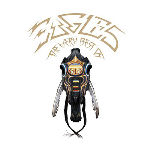
|

|
With five number one singles and four number one albums, the Eagles were among the most successful recording artists of the 1970s; at the end of the 20th century, two of those albums, Eagles: Their Greatest Hits 1971-1975 and Hotel California, ranked among the ten best-selling albums ever, according to the certifications of the Record Industry Association of America. Though most of its members came from outside California, the group was closely identified with a country- and folk-tinged sound that initially found favor in and around Los Angeles in the late '60s, as played by such bands as the Flying Burrito Brothers and Poco, both of which contributed members to the Eagles. But the band also drew upon traditional rock & roll styles and, in their later work, helped define the broadly popular rock sound eventually referred to as classic rock. That helped the Eagles to achieve a perennial appeal among generations of music fans who continued to buy their records many years after they had split up, which inspired the reunion they mounted in the mid-'90s.
The band was formed by four Los Angeles-based musicians who had come to the West Coast from other parts of the U.S. Singer/bassist Randy Meisner (born in Scottsbluff, NE, on March 8, 1946) moved to L.A. in 1964 as part of a band originally called the Soul Survivors (not to be confused with the East Coast-based Soul Survivors, who scored a Top Five hit with "Expressway to Your Heart" in 1967) and later renamed the Poor. In 1968, he was a founding member of Poco, but left the band prior to the release of its debut album, joining the Stone Canyon Band, the backup group for Rick Nelson. Singer/guitarist/banjoist/mandolinist Bernie Leadon (born in Minneapolis, MN, on July 19, 1947) arrived in L.A. in 1967 as a member of Hearts and Flowers before joining Dillard and Clark and then the Flying Burrito Brothers. Singer/drummer Don Henley (born in Gilmer, TX, on July 22, 1947) moved to L.A. in June 1970 with his band Shiloh, which made one self-titled album for Amos Records before breaking up. Glenn Frey (born in Detroit, MI, on November 6, 1948) performed in his hometown and served as a backup musician to Bob Seger before moving to L.A. in the summer of 1968. He formed the duo Longbranch Pennywhistle with J.D. Souther, and they signed to Amos Records, which released their self-titled album in 1969.
In the spring of 1971, Frey and Henley were hired to play in Linda Ronstadt's backup band. Meisner and Leadon also played backup to Ronstadt during her summer tour, though the four only did one gig together, at Disneyland in July. They did, however, all appear on Ronstadt's next album, Linda Ronstadt, released in early 1972. In September 1971, Frey, Henley, Leadon, and Meisner signed with manager David Geffen, agreeing to record for his soon-to-be-launched label, Asylum Records; soon after, they adopted the name the Eagles. In February 1972, they flew to England and spent two weeks recording their debut album, Eagles, with producer Glyn Johns. It was released in June, reaching the Top 20 and going gold in a little over a year and a half, following the release of two Top Ten hits, "Take It Easy" and "Witchy Woman," and one Top 20 hit, "Peaceful Easy Feeling."
The Eagles toured as an opening act throughout 1972 and into early 1973, when they returned to England and Glyn Johns to record their second LP, Desperado, a concept album about outlaws. Released in April 1973, it reached the Top 40 and went gold in a little less than a year and a half, spawning the Top 40 single "Tequila Sunrise." The title track, though never released as a single, became one of the band's better-known songs and was included on its first hits collection.
After touring to support Desperado, the Eagles again convened a recording session with Glyn Johns for their third album. But their desire to make harder rock music clashed with Johns' sense of them as a country-rock band, and they split from the producer after recording two tracks, "You Never Cry Like a Lover" and "The Best of My Love." After an early 1974 tour opened by singer/guitarist Joe Walsh, they hired Walsh's producer, Bill Szymczyk, who handled the rest of On the Border. Szymczyk brought in a session guitarist, Don Felder (born in Gainesville, FL, on September 21, 1947), an old friend of Bernie Leadon's who so impressed the rest of the band that he was recruited to join the group. On the Border was released in March 1974. It went gold and reached the Top Ten in June, the Eagles' fastest selling album yet. The first single, "Already Gone," reached the Top 20 the same month. But the most successful song on the LP, the one that broke them through to a much larger audience, was "The Best of My Love," released as a single in November. It hit number one on the easy listening charts in February 1975 and topped the pop charts a month later.
The Eagles' fourth album, One of These Nights, was an out-of-the-box smash. Released in June 1975, it went gold the same month and hit number one in July. It featured three singles that hit the Top Five: the chart-topping title song, "Lyin' Eyes," and "Take It to the Limit." "Lyin' Eyes" won the 1975 Grammy Award for Best Pop Vocal Performance by a Duo, Group, or Chorus, and the Eagles also earned Grammy nominations for Album of the Year (One of These Nights) and Record of the Year ("Lyin' Eyes"). The group went on a headlining world tour, beginning with the U.S. and Europe. But on December 20, 1975, it was announced that Bernie Leadon had quit the band. Joe Walsh (born in Wichita, KS, on November 20, 1947) was brought in as his replacement. He immediately joined the tour, which continued to the Far East in early 1976.
The Eagles' extensive touring kept them out of the studio, and with no immediate plans for a new album, they agreed to the release of a compilation, Eagles: Their Greatest Hits 1971-1975, in February 1976. The first album certified platinum for sales of one million copies, it topped the charts and became a phenomenal success, eventually selling upwards of 25,000,000 copies and dueling with Michael Jackson's Thriller for the title of the best-selling album of all time in the U.S.
It took the Eagles 18 months to follow One of These Nights with their fifth album, Hotel California. Released in December 1976, it was certified platinum in one week, hit number one in January 1977, and eventually sold over 10,000,000 copies. The singles "New Kid in Town" and "Hotel California" hit number one, and "Life in the Fast Lane" made the Top 20. "Hotel California" won the 1977 Grammy for Record of the Year and was nominated for Song of the Year; the album was nominated for Album of the Year and for Best Pop Vocal Performance by a Duo, Group, or Chorus. The Eagles embarked on a world tour in March 1977 that began with a month in the U.S., followed by a month in Europe and the Far East, then returned to the U.S. in May for stadium dates. At the end of the tour in September, Randy Meisner left the band; he was replaced by Timothy B. Schmit (born in Sacramento, CA, November 20, 1947), formerly of Poco, in which he also had replaced Meisner.
The Eagles began working on a new album in March 1978 and took nearly a year and a half to complete it. The Long Run was released in September 1979. It hit number one and was certified platinum after four months, eventually earning multi-platinum certifications. "Heartache Tonight," its lead-off single, hit number one, and "I Can't Tell You Why" and "The Long Run" became Top Ten hits. "Heartache Tonight" won the 1979 Grammy for Best Rock Performance by a Duo or Group with Vocal. The Eagles toured the U.S. in 1980, and at a week-long series of shows at the Santa Monica Civic Auditorium, they recorded Eagles Live. (Also included were some tracks recorded in 1976.) Released in November 1980, the double-LP (since reissued as a single CD) reached the Top Five and went multi-platinum, with the single "Seven Bridges Road" reaching the Top 40.
The Eagles were inactive after the end of their 1980 tour, but their breakup was not officially announced until May 1982. All five released solo recordings. (Walsh, of course, maintained a solo career before, during, and after the Eagles.) During the rest of the 1980s, the bandmembers received several lucrative offers to reunite, but they declined. In 1990, Frey and Henley began writing together again, and they performed along with Schmit and Walsh at benefit concerts that spring. A full-scale reunion was rumored, but did not take place. Four years later, however, the Eagles did reunite. In the spring of 1994, they taped an MTV concert special and then launched a tour that ended up running through August 1996. The MTV show aired in October, followed in November by an audio version of it, the album Hell Freezes Over, which topped the charts and became a multi-million seller, spawning the Top 40 pop hit "Get Over It" and the number one adult contemporary hit "Love Will Keep Us Alive."
The Eagles next appeared together in January 1998 for their induction into the Rock and Roll Hall of Fame, when the five present members performed alongside past members Leadon and Meisner. On December 31, 1999, they played a millennium concert at the Staples Center in Los Angeles that was recorded and included on the box-set retrospective Selected Works 1972-1999 in November 2000. ~ William Ruhlmann, All Music Guide |
|
|
KIDNEY THIEVES
| |  |
|
|
 |
kidneythieves
 free dominguez - vocals free dominguez - vocals
bruce m. somers - sounds
sean beaven - mixing
Everyone's heard the story. You're travelling alone on business. You inadvertently walk into the wrong bar or down the wrong dark street in New Orleans, Houston, Las Vegas, Rio -- wherever. Next thing you know, you wake up from a drug induced stupor in a dirty bathtub, disoriented, packed in ice, half-dead, with two vertical incisions and a sharp pain in your back. "Call 911 or you will die" is courteously written on your chest in lipstick, and your kidneys are gone!! The story of the kidney thieves is one of the most horrible in contemporary culture. But is it for real?
Unlike the organ snatchers of urban legend, Los Angeles-based industrial rockers kidneythieves are no myth. They are, verifiably, the potent duo of singer/songwriter Free Dominguez and producer/multi-instrumentalist Bruce M. Somers whose debut album will be released in June. With music as dark, dramatic and compelling as their self-professed influences Nine Inch Nails, Marilyn Manson and Filter, kidneythieves are preparing to build a legend as memorable as their namesake.
With her father being a Cuban refugee, twenty-six-year old Free Dominguez was raised as a first generation American in Houston, TX, with a healthy respect for freedom of expression -- political, intellectual, artistic and otherwise. Encouraged in the arts from an early age, she mainly expressed herself through dance but secretly dreamed of being a singer. After a few restless years studying psychology at a Houston college, she moved to Los Angeles in 1992 to pursue her dream.
Like many other talented artists before her, she spent her first years in LA working odd jobs -- mainly as a legal assistant at a labor law firm representing disgruntled employees -- while trying to find a way into the music business. "Ironically, working at the law firm has really been helpful in my songwriting," says Free. "Being exposed to the seedy underbelly of the business world can be very inspirational in a weird way."
In February 1996, Free was introduced to sound architect Bruce Somers through an entertainment attorney friend who thought she might appreciate the music Somers was working on. "We just clicked," says Free of the chance meeting. "It was just one of those magical things. We co-wrote our first song just three hours after we met."
Somers, a Cleveland native, had moved to Los Angeles in 1989 with a communications degree from Ohio State. Bruce played drums in numerous trash garage bands throughout high school and college, and became good friends and bandmates with aspiring local musician/producer Sean Beavan his sophomore year. Somers and Beavan -- who is now well-known for his mixing and engineering work for Nine Inch Nails and Marilyn Manson -- logged many hours in Ohio State's primitive 8-track recording studio, experimenting with sound and becoming proficient in all the technical aspects of making music.
"It didn't take us more than a few sessions to realize that we were both interested in heavier, rhythmic music," remembers Somers, "so we began developing some harder tracks I'd been recording in my home studio." Bruce's work ran the gamut, from full-throttle industrial experiments to near-cinematic, atmospheric scores which he had conceived while working on film music.
"The difficulty in settling on our sound was finding the right way to take a very sexy, feminine voice and put it on top of extremely agitated, aggressive music," says Somers. Fortunately, the tension created by the interplay of Free's vocals with Bruce's aggro-beats and moody dreamscapes proved to be defining in terms of their future musical direction. Leavening the coolness and precision of Somers' studio concoctions with Free's strong sense of melody, they ventured to craft real songs out of the sonic clamor and in the process, created powerful and affecting vehicles for Free's cryptic lyrical imagery.
By 1997, Somers and Free had christened themselves kidneythieves and produced nearly a full album of demos. "A friend of mine told me the story of these ruthless, evil kidney thieves," Free said of the group's moniker. "It was such an ominous and freaky image, and so strangely relevant to the things we were writing about, that we couldn't resist."
With the upcoming debut of their single, "s+m (a love song)," in April and the new album -- mixed by Somer's pal Sean Beavan -- bowing in June, kidneythieves are preparing to release some of the most challenging, emotionally-sophisticated music of the past few years. Drawing on influences that range from industrial and techno to metal and trip hop, the duo explore themes of decadence, lust, obsession, isolation and salvation through music and lyrics as complex as the subject matter. Nevertheless, Beavan's mixes reveal an undeniable, albeit twisted, pop sensibility as well as a keen awareness of the traditional song structure underpinning kidneythieves' songs, giving even the bleakest tracks a radio-ready appeal. Somers' synths, pounding beats and rapid-fire riffs may provide an appropriately ominous backdrop for Free's psychodramas, but they can barely disguise the romantic soul struggling just beneath the surface.
|
|
|


